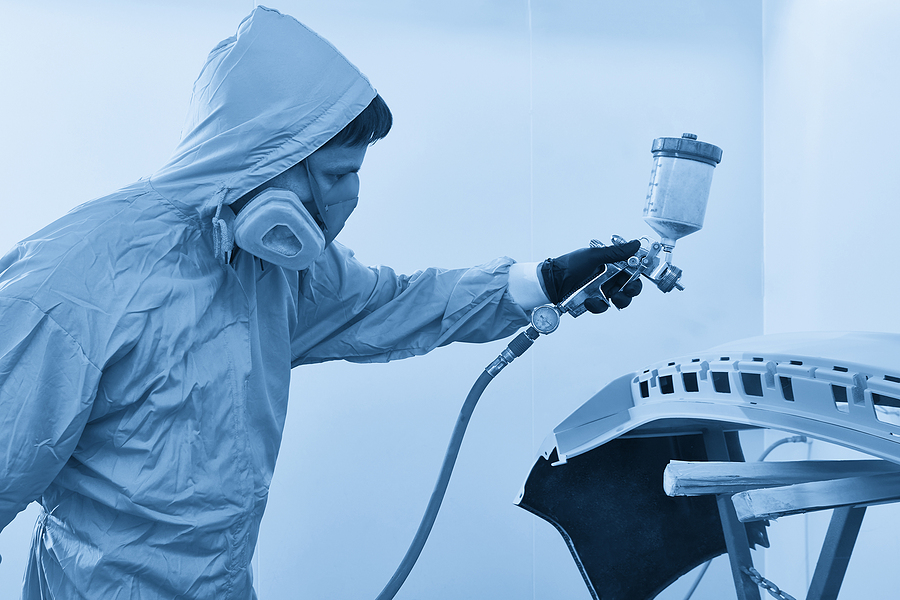Planning to get a new paint booth? Read this before you buy one!
This post shares must-known facts about paint booth fire suppression. Let’s start!
What NFPA and OSHA Say About Fire Protection
To legally and safely operate a paint booth, you have to follow the fire codes. The NFPA and OSHA both publish major guidelines you need to know.
The NFPA standard 33 lays out fire rules for spray finishing operations. Sections 9.1.1 and 9.7 cover important topics like sprinklers, extinguishers, ventilation, and more. Get familiar with the specific codes for your booth type—this is a must!
OSHA standard 1910.107 deals with spray booth safety. Parts (b)(5)(iv) and (f)(1) spell out the fire protection systems your booth needs. Study up on the exact rules for your specific booth and spray setup. Never even think about running a booth without the right suppression in place!
The local fire marshal also oversees fire safety codes in your area. Check if they have any special local rules you need to follow. Make 100% sure your fire systems meet all the standards. This protects you from fines or disasters down the road.
Picking the Right System for Your Specific Booth
What type of fire suppression fits your situation? That depends on the spray system your booth uses. For example:
- Powder coating booths need to follow NFPA 33 section 9.7.1. It lists particular requirements for powder operations. Things like ventilation, ducts, extinguishers, and automatic suppression systems tailored for powder.
- Booths with electrostatic spray painting have to meet NFPA 33 section 9.8.2. It covers details like ventilation patterns, wiring, grounding measures, manual extinguishers, and protection of pumps and transfer containers.
- Large open spray booths have their own set of needs outlined in section 9.3. Pay close attention to topics like sprinkler location and airflow.
- Water wash booths? They’ve got specialized requirements covered in section 9.5 and other areas.
Carefully study the exact codes in NFPA 33 that apply to your booth. Follow the rules closely to get fully adequate fire protection. Don’t take shortcuts or operate an unsafe spray booth!
More Key Factors to Consider for Your Booth’s Fire Suppression
Aside from the type of spray operation, other factors impact the best fire system for your situation. For example:
- Booth design – The size, ventilation patterns, ductwork layout, and other design specifics affect the fire protection needs. Know how these details tie into the codes and standards.
- Local conditions – Environmental factors around the booth, like dust or chemical vapors, can require specific types of suppression systems or extras.
- Inspection and testing – Regularly maintain the system to keep it in reliable working order. Don’t let inspections or testing lapse. Catch any issues before they become bigger problems.
- Staff training – Train everyone on properly using portable extinguishers and activating installed suppression systems. Quick, smart response is critical in a fire emergency.
- Accessibility – Keep extinguishers clearly visible and accessible. Don’t block sprinklers or obscure the release valves and controls.
Take the time upfront to make careful, informed decisions about fire safety equipment for your specific booth. Follow the codes closely, but also think about the realities of your unique situation. Get expert help whenever you need it. Do not cut corners when it comes to fire suppression!
Complete Workplace Fire Protection
Though paint booths need specialized suppression systems, also look at the bigger picture of protecting your entire facility. For example:
- Install automatic sprinklers in all work areas adjacent to the paint booth per NFPA 13. This protects the surrounding space if a fire spreads.
- Keep adequate Class B dry chemical extinguishers located around the building. Make sure they are inspected monthly.
- Ensure there are clear, unobstructed aisles, exits, and escape routes everywhere in the building.
Hope this helps!
